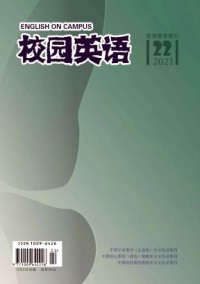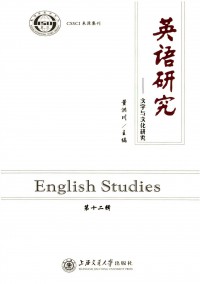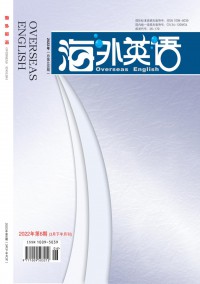英语故事
前言:想要写出一篇令人眼前一亮的文章吗?我们特意为您整理了5篇英语故事范文,相信会为您的写作带来帮助,发现更多的写作思路和灵感。

英语故事范文第1篇
A 阅读和朗读一些原版童书,积累故事素材。阅读主要是考虑原汁原味的说法,比如小兔子用bunny,小猫用kitten等,所谓熟读唐诗三百首,不会作诗也会吟,慢慢地原版童书读多了,就大概了解一些地道说法,这样比自己凭空想词汇和句型要容易得多。朗读则是为了给孩子讲故事做准备,每天坚持为孩子朗读一段原声读物,家长可提高自己断词、断句的能力,读得更有腔调,收获也越大。
B 讲词汇故事和模式化故事。这类故事的重点就是关键词和简单句型的不断重复。最经典的故事莫过于《Brown Bear,Brown Bear,What do you see?》整个故事其实就是两个句型的不断重复,每次用不同颜色的动物去代替。比如《The Hungry Bear》这个故事是说,熊饿了,想吃东西,就给“熊”拿出一个水果,让孩子认识,接下去再吃、再认单词,以此类推,这样孩子就能记住很多东西的英文名称。
C 有简单情节的故事。这个时候的故事相比较来说,就稍微有点复杂了,但是重复的句型模式还是不能省去。比如《The Very Hungry Caterpillar》,故事开始先有衬托,交代故事背景,然后第一天饿了吃什么,第二天饿了吃什么……开始重复,最后毛毛虫变成一只可爱的蝴蝶,有了一个美好的结尾。《Goodnight Moon》中不停的说“晚安”,《The Run away Bunny》中,兔子母子不停地用“if”开展追逐游戏,甚至到《Guess How Much I Love You》中,大小兔子不停地比较“爱”的程度。这些经典的童书都可以用来借鉴,绘声绘色地讲给孩子听。
D 寻常的故事。经过前三步的积累,到了这一步,给孩子讲故事终于不必仔细筛选,考究了。选一些英语童书故事先给孩子读一遍,再和孩子一起说说故事的大概内容,最后让孩子自己通读一遍。当然,孩子的记忆难免出错,所以您最好在旁边听着,等孩子读完后再给他矫正那些发音错误的地方。发现孩子出错,您最好不要当时打断孩子的阅读而去矫正错误,因为那样会打断孩子的思路和语感。
英语故事范文第2篇
今天,午自修的时候,我们本来在很认真的做作业。突然,英语老师又走了进来。
我想:英语老师肯定又有什么事情了?果真如此,英语老师说:“同学们,过几天,学校里要举行英语故事选拔赛,每个班只能参加两个同学,在这些同学中,最后选出两位最佳的选手,代表学校去参加比赛,有兴趣的同学,或者英语底子好的同学,可以先到我这里来报名,我经过筛选后,最后选两名同学代表班级去参赛。”
当我听到这个消息后,我有点向跃跃欲试的感觉。那么,我到底是参加呢?还是不参加呢?我真是犹豫不决呀!
英语故事范文第3篇
Now, I tell a story for everybody: Gu Meng is a young boy, he does not have the family member, therefore is very sad, but he has a cat, this cat can sing.
A Saturday morning, gives a thought to the dream to go to the market, this cat sang a song: "Small, two small, three small rabbits; Four small, five small, six small white rabbits, seven small, eight small, nine small white rabbits, ten small white rabbits."
A man rides in immediately, has listened to this first song, but also bought this cat, Gu Meng obtained the money, in the heart is very happy.
PS:这是对光脚小丫的一个<<英语故事>>的校正.
不懂英文的朋友,表向我扔鸡蛋!
英语故事范文第4篇
一、故事探路,激发思维
1. 麦兜引路,妙趣横生
老师通过展示自己的name card,介绍my English name,my favourite drink and food,以及my favourite cartoon star,引出贯穿全课的主情景人物“麦兜”:Mc Dull is very lovely, but he isn’t happy today,because he is hungry.然后学麦兜的声音: I’m hungry.老师随即和其对话What would you like? 将其带入a snack bar,接着引出课题“At a snack bar”。
正所谓“亲其师,信其道”。这个环节通过展示教师自己的name card,拉近教师与学生的距离,介绍的爱好都是与本课所涉及的食物和饮料有关。通过最后一项My favourite cartoon star引出本课贯穿始终的主人公可爱的麦兜。卡通形象的出现,不仅仅是有趣,更重要的是成为故事的引子,最终为教学服务。接着通过教师与麦兜的对话,知道麦兜非常的饿,由此引出课题。这样的导入既趣味横生,又顺理成章。
2. 以旧带新,融会贯通
进入小吃部以后,遇见一个waitress在门口问What would you like? 然后请学生说说有哪些吃的和喝的,复习饮料类和食物类单词,并教“Something to drink/eat?”,接着同桌一人扮演麦兜,一人扮演营业员操练新句型,期间教新单词noodles。麦兜点完餐后又碰见好朋友麦唛肚子也很饿,就引出新句型“How about you?”。
孔子曰:“温故而知新”。由于本课的新授句型较多,学生掌握较为吃力。所以在本环节中,笔者设计进入小吃店为麦兜点餐,到回忆以前所学的食物及饮料类等旧单词,以旧带新,借机学习了新句型“Something to drink/eat?”接着又遇到麦兜的好朋友麦唛,再引出新句型“How about you?”这样为新课文的学习扫清了一部分障碍,让学生在“麦兜点餐”的故事中快乐地学习。
实践证明:以适合学生年龄特点的故事教学探路,能让学生身临其境地通过活跃的思维和丰富的想象,充分激发学生的求知欲。
二、故事导航,循序渐进
教育学原理告诉我们:知识的积累是一个循序渐进的过程。对于学生来说:英语语言知识的掌握更是如此。
仍以上述课文为例:麦兜在snack bar 里遇见了Su Hai,Su Yang和她们的爸爸,随即提出以下问题,然后观看动画。
1)What would Su Yang and Su Hai like? Anything else?
2)What would their father like? Anything else?
3)How much are they?
在回答问题的过程中教Anything else?和How much is it/ are they?并操练。
在课文学习环节中,通过设计麦兜与Su Hai、Su Yang在小吃店偶遇,从而导入课文,把卡通人与课文主人公巧妙地结合在一个故事中,自然又真实。接着在观看课文动画前导出问题,让学生带着问题去听,在回答提出的问题时又适时解决了课文的几个难点。这样循序渐进,孩子们在不知不觉中就学会了新句型。
三、故事模拟,巩固提高
教学实践还告诉我们:无论是知识的新授还是巩固,都必须从学生的认知能力出发,通过反复操练得以掌握与巩固。在本课中,通过chant把新授内容都放在里面巩固练习,琅琅上口。教师要求学生分组运用新授的句型和词组,模拟故事情景,进行表演操练,让学生在真情实景中掌握新知,并知道了作为Waiter或Waitress在快餐店应该说……,作为Customer(顾客)在快餐店可能会说……,给学生展示自我风采搭建了一个很好的平台。在group work中学生们的默契配合也锻炼了他们团结协作的能力。
四、故事拓展,精彩再现
英语是一门实践性很强的学科,教师应以故事为载体,进行点拨引路,学生乐于参与,并想方设法让学生进行联想,以期达到举一反三、触类旁通的效果。仍以上述故事为例:麦兜看到Su Hai和Su Yang买了这么多好吃的东西,他也垂涎欲滴了。假如你是waiter或waitress,请用今天所学的句型帮助麦兜和麦唛点餐。同时给出菜单及价目表和相关句型,随后利用自制的食物图片和麦兜头套让学生真实演练。Mc Dull and Mc Mug have bought much food and drinks, they are going home now. Let’s say goodbye to them.( 麦兜和麦唛已经买了很多吃的喝的,他们要回家了,我们和他们说再见吧!)结束全课。麦兜和麦唛在吃饱喝足后回到家,也让学生能够在学完整课后对这一有始有终的有趣故事津津乐道,回味不已。
英语故事范文第5篇
What is music, no one can explain.
Just imagine for a moment that you are sitting in a magnificent concert hall. The conductor waves his shiny baton with a graceful swing through the air. A beautiful melody floats slowly around you
You sit quietly with your eyes shut, your heart open. The delicate vibratos of the violins carry you to a mood of heavenly bliss. An airy solo of the flute draws you to the imagination, the notes flow like some jumping swallows dancing and singing calling for the coming of Spring.
I like music from my childhood. My father often says when I was a baby I would never go to sleep without soft, beautiful lullabies crooning around my ears . Now music is a part of my life. When I feel tired, disappointed or in low spirits, I usually turn to music. Music, nothing but only music can have so wonderful an effect on my heart, on my pond of feeling.
Music comes with us. Where there is life, there is music. Where there is music, there is hope. It lies in everyday life, in everyone’s life, in everything we see, in everything we hear-- in the rhythm of the sea, in the whisper of a gentle wind, in the melody of a bird’s singing, in the harmony of village chimes. You can hear music wherever you may go . A man who doesn’t know music will lose half the world. A nation that pays little or no attention to music will be a sad nation. A world without music would be the one for the dead and devils.
So dear friends, let’s open our arms to embrace music and enjoy it throughout our lives. Love music and love life.
Thank you.
哪里有生活,哪里就有音乐
音乐是什么,无人能解释清楚。
想象此刻你正坐在富丽堂皇的音乐大厅里,乐队指挥手中的闪闪发亮的指挥棒在空中优雅的舞动。悠扬悦耳的音调飘扬在你的周围。
静静地闭上双眼,敞开心扉。小提琴精妙的振颤会把你带入到天堂祈福的心境;大提琴微弱低沉的叹息会使你想起一位老人在风中散步,沉浸在童年时代宁静和挚爱的回忆中;长笛轻快的独奏使你从想象中猛醒;流畅的音符像一群飞舞歌唱的燕子在呼唤春天的来临。
从童年时代音乐就是我的挚爱。父亲经常说,我在襁褓中,没有温柔甜美的摇篮曲在耳边低吟,就难以入眠。现在音乐是我生活的一部分。每当我感到疲倦,失望或情绪不振时,我就求助于音乐。音乐,除了音乐,没有什么对我的身心和情感有如此奇妙的影响。
音乐与我们同在,哪里有生活,哪里就有音乐;哪里有音乐,哪里就有希望。它存在于每个人的日常生活,存在于我们耳闻目睹的一切事物之中;存在于海的波涛,清风细语,悦耳鸟鸣,和谐的乡村钟声之中;无论你身在何处,都会听到音乐。一个不了解音乐的人将失去半个世界。一个不重视音乐的民族将是一个悲哀的民族。一个没有音乐的世界将是逝者和恶人生存的世界。
免责声明:以上文章内容均来源于本站老师原创或网友上传,不代表本站观点,与本站立场无关,仅供学习和参考。本站不是任何杂志的官方网站,直投稿件和出版请联系出版社。


